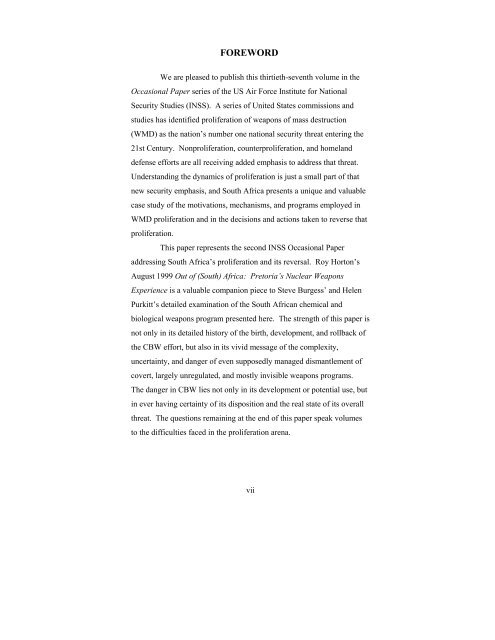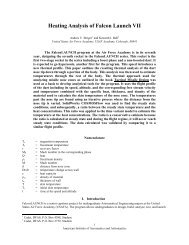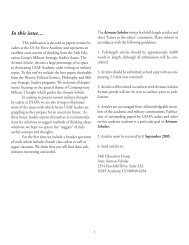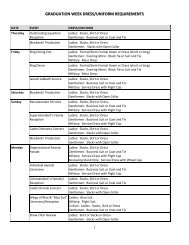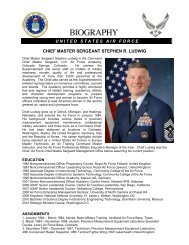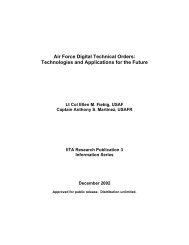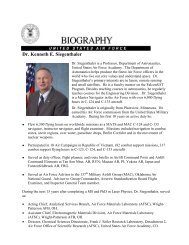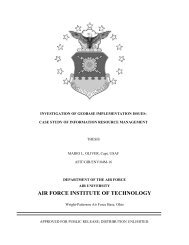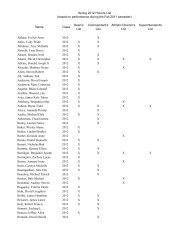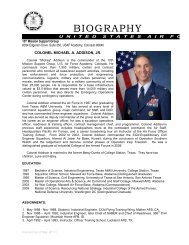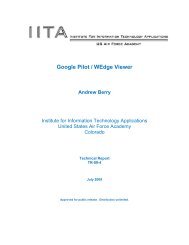the rollback of south africa's biological warfare program
the rollback of south africa's biological warfare program
the rollback of south africa's biological warfare program
Create successful ePaper yourself
Turn your PDF publications into a flip-book with our unique Google optimized e-Paper software.
FOREWORD<br />
We are pleased to publish this thirtieth-seventh volume in <strong>the</strong><br />
Occasional Paper series <strong>of</strong> <strong>the</strong> US Air Force Institute for National<br />
Security Studies (INSS). A series <strong>of</strong> United States commissions and<br />
studies has identified proliferation <strong>of</strong> weapons <strong>of</strong> mass destruction<br />
(WMD) as <strong>the</strong> nation’s number one national security threat entering <strong>the</strong><br />
21st Century. Nonproliferation, counterproliferation, and homeland<br />
defense efforts are all receiving added emphasis to address that threat.<br />
Understanding <strong>the</strong> dynamics <strong>of</strong> proliferation is just a small part <strong>of</strong> that<br />
new security emphasis, and South Africa presents a unique and valuable<br />
case study <strong>of</strong> <strong>the</strong> motivations, mechanisms, and <strong>program</strong>s employed in<br />
WMD proliferation and in <strong>the</strong> decisions and actions taken to reverse that<br />
proliferation.<br />
This paper represents <strong>the</strong> second INSS Occasional Paper<br />
addressing South Africa’s proliferation and its reversal. Roy Horton’s<br />
August 1999 Out <strong>of</strong> (South) Africa: Pretoria’s Nuclear Weapons<br />
Experience is a valuable companion piece to Steve Burgess’ and Helen<br />
Purkitt’s detailed examination <strong>of</strong> <strong>the</strong> South African chemical and<br />
<strong>biological</strong> weapons <strong>program</strong> presented here. The strength <strong>of</strong> this paper is<br />
not only in its detailed history <strong>of</strong> <strong>the</strong> birth, development, and <strong>rollback</strong> <strong>of</strong><br />
<strong>the</strong> CBW effort, but also in its vivid message <strong>of</strong> <strong>the</strong> complexity,<br />
uncertainty, and danger <strong>of</strong> even supposedly managed dismantlement <strong>of</strong><br />
covert, largely unregulated, and mostly invisible weapons <strong>program</strong>s.<br />
The danger in CBW lies not only in its development or potential use, but<br />
in ever having certainty <strong>of</strong> its disposition and <strong>the</strong> real state <strong>of</strong> its overall<br />
threat. The questions remaining at <strong>the</strong> end <strong>of</strong> this paper speak volumes<br />
to <strong>the</strong> difficulties faced in <strong>the</strong> proliferation arena.<br />
vii


